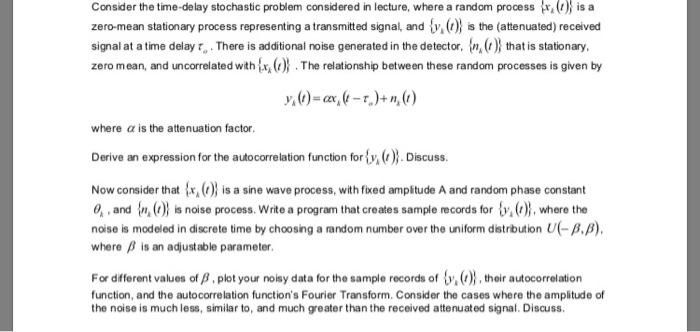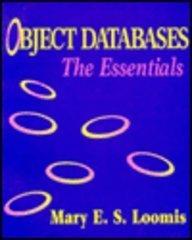Please do in python no derivativation needed. Just code

Consider the time-delay stochastic problem considered in lecture, where a random process,is a zero-mean stationary process representing a transmitted signal, and y(is the (attenuated) received signal at a time delay t. There is additional noise generated in the detector, hat is stationary, zero mean, and uncorrelated with ,).The relationship between these random processes is given by where is the attenuation factor. Derive an expression for the autocorrelation function forv,()Discuss. Now consider that x,() is a sine wave process, with fixed ampitude A and random phase constant 0, and n,) is noise process. Write a program that creates sample records for y,(1, where the noise is modeled in discrete time by choosing a random number over the uniform distribuion UB.B) where B is an adjustable parameter. For different values of B plot your noisy data for the sample records of y, their autocorrelation function, and the autocorrelation function's Fourier Transform. Consider the cases where the amplitude of the noise is much less, similar to, and much greater than the received attenuated signal. Discuss Consider the time-delay stochastic problem considered in lecture, where a random process,is a zero-mean stationary process representing a transmitted signal, and y(is the (attenuated) received signal at a time delay t. There is additional noise generated in the detector, hat is stationary, zero mean, and uncorrelated with ,).The relationship between these random processes is given by where is the attenuation factor. Derive an expression for the autocorrelation function forv,()Discuss. Now consider that x,() is a sine wave process, with fixed ampitude A and random phase constant 0, and n,) is noise process. Write a program that creates sample records for y,(1, where the noise is modeled in discrete time by choosing a random number over the uniform distribuion UB.B) where B is an adjustable parameter. For different values of B plot your noisy data for the sample records of y, their autocorrelation function, and the autocorrelation function's Fourier Transform. Consider the cases where the amplitude of the noise is much less, similar to, and much greater than the received attenuated signal. Discuss








